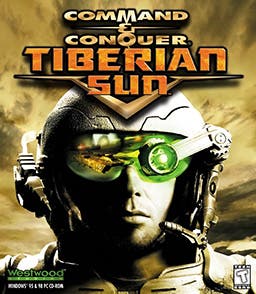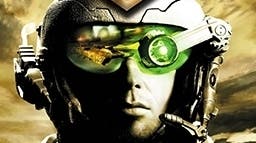20 years later, Command & Conquer: Tiberian Sun is still a frightening prophecy
Should the good guys always win?
Looking back on the real-time strategy boom of the late 90s, it's unsurprising that modern audiences tend to celebrate Age of Empires, Starcraft and Warcraft. Beyond being great games, these titles also told stories that feel unproblematic. They are set in either the distant past, the distant future or in the distant recesses of our minds. The Command & Conquer series, however, played with a parallel version of the real world heavily influenced by post-Cold War international relations. In 1999 Westwood Studios took that plausible real-world setting further with Command & Conquer: Tiberian Sun. Set in 2030, Tiberian Sun asks two difficult but important questions: are we better off if the "good guys" win? And, is this version of Earth, on the verge of ecological disaster, even worth fighting over? These questions, like the game's FMV sequences, could easily be laughed off by players in the halcyon days of the 1990s. Players in 2019, however, must wonder if Tiberian Sun represents a schlocky relic of a bygone era or a prescient prediction of an impending reality.

The first Command & Conquer, released in 1995, didn't just reflect post-Cold War international relations, it was enthusiastic about them. Although you could play through the campaign as either the Global Defense Initiative (GDI) or the Brotherhood of Nod, only the GDI victory was considered canon. And what kind of message did the GDI victory impart on players in the mid-90s? A Western led, United Nations-sanctioned multilateral force using superior technology destroys an anachro-terrorist cult led by a charismatic madman based in the Third World in order to secure control over precious energy resources. The game might as well have been called The Gulf War, but with alien crystals. Or, with a more succinct 90s twist, The Gulf War: Part Deux.
All kidding aside, there's a real earnestness to the depiction of the world in Command & Conquer. Coming out of the Cold War, GDI represents a real hope held by many in the West in the 1990s for a return to the old idea of collective security first explored by the League of Nations in the Interwar Period. What if international peacekeepers had the power to actually maintain peace and spread freedom? What if dictators like Saddam Hussein, or his fictional stand-in Kane, could be swiftly dealt with through cooperation rather than the grandstanding, acrimonious and often pointless politics of the UN Security Council? You could rightly argue this sort of idea represents nothing more than a neoliberal dream, best consigned to the waste bin of history. But in a world not yet burdened by the War on Terror or the Iraq War, such dreams were seen by many as not only worthwhile, but desirable.
If Command & Conquer represents a neoliberal dream of the future, Tiberian Sun represents the moment that dream turns into a nightmare. By the start of the game, in 2030, GDI is still struggling to defeat remaining Nod cells spread across national boundaries in the developing world. GDI are also still searching for Nod's leader Kane, who, in another parallel to Saddam, went uncaptured and unexecuted after the First Tiberium War. While the renewed confrontation between GDI and Nod takes centerstage in the game's missions and FMV sequences, there exists a new and disturbing problem in the background: namely, the Tiberium-induced collapse of the Earth's environment.
In the 30 years after the first war, Tiberium, the crystal-like, alien substance GDI and Nod fight to control, has spread around the world. Although it is an incredible source of energy and wealth, Tiberium also takes a devastating toll on the surrounding environment. It saps other resources from the ground. It leaves the surrounding landscape arid and desolate, making the player feel as though they are fighting on a distant moon rather than Earth. Tiberium's presence also affects the climate, leading to a blacked-out sky filled with dangerous ion storms that threaten the player's units and structures. The civilian buildings the player encounters throughout the campaign are either bombed out or left wrecked by the environment.
On top of all this, Tiberium, the substance required to wage war, also kills unprotected player units and noncombatants, either through direct contact with the crystals, inhaling the noxious gases they emit, or breathing in small Tiberium particles. Most of the GDI and Nod soldiers in the game wear what are essentially spacesuits to survive the environment. Civilians, on the other hand, are not so lucky. Those civilians not killed outright by contact with Tiberium have their genes mutated, leaving them physically deformed and prone to seizures. These mutants, referred to as The Forgotten, have banded together after being rejected by both GDI and Nod, and live as outcasts in areas heavily infested by Tiberium. As players make their way through the campaign, collecting Tiberium, they do so knowing the harvesting of Tiberium also accelerates the spread of the substance, thus compounding the ecological disaster.
Tiberian Sun features a dark and foreboding industrial soundtrack by Frank Klepacki. It includes frightening cyborgs and chemical weapons. It also includes actor Michel Biehn, a harbinger of the apocalypse if there ever was one. But what gives the game its incredible sense of dread and despair is the environment. Regardless of which side wins the war, there's no stopping the spread of Tiberium. The planet has gone beyond the tipping point. In fact, Kane's goal in Tiberian Sun is to accelerate the inevitable by detonating a World Altering Missile, which will turn the entire planet into a Tiberium red zone. The ultimate purpose of this plan is to make the world more hospitable for Kane's alien overlords, but it would also make the Earth livable for existing Tiberium-based life and end the planet's energy crisis.
The provided response to this plan is to try to stop it, but at the same time a player has to consider what kind of world would be left after a GDI victory. Here they are, 30 years after the First Tiberium War, and GDI has failed to destroy NOD, they've failed to halt the spread of Tiberium, and they've given up on The Forgotten. GDI's leaders, played by Biehn and James Earl Jones, spend the game safely ensconced in either a massive flying troop carrier or in an orbiting space station. GDI wants them to save the world but makes sure they don't have to touch it. Kane is obviously insane, but is Earth that much better off with these "good guys?" GDI's good intentions don't matter a whole lot when you're dealing with a planetwide ecological disaster.
Much like the original Command & Conquer, Tiberian Sun's development was heavily influenced by Westwood Studios' previous RTS, Dune 2, and, by extension, Frank Herbert's Dune novels. From Dune, we have in Tiberian Sun an arid, inhospitable planet, environmental hazards, a conflict over a precious resource, and a genetically mutated race. Yet even after accounting for these science-fiction influences, it's hard not to see our own world reflected in the parallel universe of Tiberian Sun. Nod's tactics and structure are not so dissimilar from ISIS. The banishment of The Forgotten and the privileged position of GDI can remind you of any number of real-world conflicts between the haves and have nots. You can also read in GDI's failures the pitfalls involved with building an international consensus without considering the opinions of the developing world. Tiberium, of course, is an easy stand in for fossil fuels. And the deleterious effects of Tiberium on the environment and humanity is simple to comprehend in the age of climate change, deforestation, and ingesting microplastics.
I'm not saying we're going to have cyborgs by 2030. If there are, here's hoping Michael Biehn will still be around to save us. But it's worth asking if some of Tiberian Sun's ideas about the environment and international relations aren't worth thinking about. This game came out on my birthday in 1999, and its bleak story of a "good guy" dominated future hit me like a ton of bricks right in the middle of my "America, Fuck Yeah!" teenage years. When I replayed it in the 2000s, it confirmed my suspicions about human nature during my "Fuck Imperialism, PhD" twenties. Unfortunately, it speaks to me even more now I'm in my "Fuck Everything" thirties. I played all the classic RTS games when they debuted in the 1990s, but I couldn't tell you a thing about their stories now. Tiberian Sun is the lone title from that era that has stayed with me. How could you forget a game that's gone from being ridiculously outlandish to alarmingly plausible?


